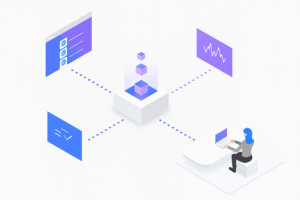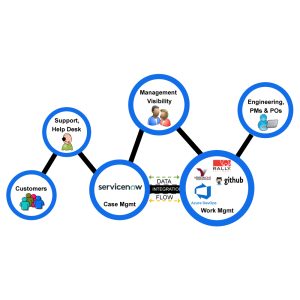Organizations across industries face increasing pressure to meet ESG (Environmental, Social, and Governance) standards while minimizing their environmental footprint. Managing environmental data, mitigating risks, and ensuring compliance requires robust intelligence solutions. The IBM Environmental Intelligence Suite offers an advanced, AI-powered platform designed to help businesses monitor, predict, and act on environmental factors in real-time.
This blog will provide an in-depth exploration of how IBM Environmental Intelligence Suite supports ESG compliance, optimizes operational efficiency, and enhances environmental stewardship. We’ll cover key features, applications, and strategies for maximizing the suite’s capabilities to build sustainable business practices.
Understanding the IBM Environmental Intelligence Suite
IBM Environmental Intelligence Suite is a cloud-based solution that integrates AI, geospatial analytics, and weather data to provide actionable insights. By aggregating and analyzing vast environmental datasets, it empowers organizations to make data-driven decisions, minimize disruptions, and ensure regulatory compliance.
- Real-Time Monitoring: Track environmental factors such as air quality, water pollution, and extreme weather events using real-time data. Businesses can monitor key environmental indicators and respond promptly to mitigate risks.
- AI-Powered Risk Assessment: Predict and assess potential risks through AI algorithms that analyze historical and real-time data. This proactive approach helps organizations prevent environmental incidents and reduce operational disruptions.
- Automated Alerts and Notifications: Receive automated alerts about potential environmental threats, enabling proactive decision-making. Real-time notifications ensure teams are informed and can take swift action to manage incidents.
- ESG Reporting: Generate accurate reports aligned with ESG standards for stakeholders and regulators. This feature simplifies compliance by providing reliable data for transparent reporting and informed decision-making.
- Geospatial Analysis: Visualize environmental data using interactive maps to identify patterns and areas of concern. Geospatial insights offer a comprehensive view of environmental risks, supporting effective resource allocation.
Enhancing ESG Compliance with IBM Environmental Intelligence Suite
IBM Environmental Intelligence Suite plays a pivotal role in helping companies meet ESG objectives through:
1. Proactive Risk Management
Environmental disruptions can lead to significant financial losses and reputational damage. The suite?s predictive analytics and real-time monitoring capabilities allow organizations to identify and mitigate risks before they escalate. From monitoring floods and wildfires to tracking pollution levels, businesses can take swift action to prevent negative impacts. The ability to simulate different scenarios further enhances preparedness and resilience.
2. Data-Driven ESG Reporting
Accurate, transparent ESG reporting is essential for regulatory compliance and stakeholder trust. IBM Environmental Intelligence Suite consolidates data from multiple sources, ensuring reports are aligned with sustainability standards such as the Global Reporting Initiative (GRI) and the Task Force on Climate-related Financial Disclosures (TCFD). Customizable dashboards allow organizations to visualize their environmental impact and communicate progress effectively.
3. Operational Efficiency
By anticipating environmental risks, organizations can optimize operations, reduce downtime, and minimize resource wastage. The suite provides actionable insights to adjust supply chain operations, logistics, and workforce management, ensuring continuity during adverse environmental conditions. Additionally, it helps businesses reduce energy consumption and lower operational costs.
4. Sustainability Goals Alignment
Organizations aiming to achieve Net Zero or reduce carbon emissions can monitor their progress using the suite?s analytics. It enables continuous tracking of emissions, energy consumption, and resource utilization, providing recommendations for improvements. Actionable insights allow companies to implement sustainable practices, driving long-term environmental responsibility.
Real-World Use Cases of IBM Environmental Intelligence Suite
1. Energy Sector
Energy companies use the suite to monitor weather patterns and anticipate outages caused by storms. By integrating predictive insights with asset management systems, utilities can deploy resources effectively and minimize downtime. Additionally, it assists in identifying opportunities for renewable energy adoption.
2. Manufacturing
Manufacturers track emissions and optimize resource consumption using environmental data. The suite assists in maintaining compliance with environmental regulations and reducing operational costs. Predictive insights allow manufacturers to minimize waste, improve production processes, and enhance sustainability efforts.
3. Retail and Supply Chain
Retailers mitigate supply chain disruptions by analyzing weather forecasts and predicting risks. This enhances inventory management and minimizes losses during extreme weather events. By leveraging geospatial analysis, companies can optimize delivery routes and reduce transportation emissions.
4. Financial Services
Financial institutions leverage environmental data to assess investment risks, evaluate the impact of climate change on portfolios, and align their strategies with ESG goals. The suite provides actionable insights that enable sustainable investments and support responsible financial decision-making.
Implementation Strategy: Unlocking the Full Potential of IBM Environmental Intelligence Suite
To maximize the benefits of IBM Environmental Intelligence Suite, businesses should follow these steps:
- Define Clear ESG Goals: Establish measurable objectives aligned with sustainability and compliance standards.
- Integrate Data Sources: Connect the suite with existing environmental monitoring tools, IoT devices, and third-party data providers.
- Leverage AI Insights: Use predictive analytics for scenario planning and risk mitigation. Continuously refine AI models for more accurate predictions.
- Automate Reporting: Streamline ESG reporting through automated data collection and analysis, ensuring timely and accurate disclosures.
- Engage Stakeholders: Share actionable insights with internal teams, regulators, and investors to foster transparency and drive collaborative decision-making.
Conclusion: Partner with Nexright for Smarter Environmental Management
Implementing the IBM Environmental Intelligence Suite requires a strategic approach to unlock its full potential. At Nexright, we specialize in integrating and optimizing environmental intelligence solutions tailored to your business needs. Our experts ensure seamless implementation, enabling organizations to achieve ESG compliance, mitigate risks, and build sustainable operations. We offer end-to-end support, from initial assessments and data integration to AI model customization and continuous monitoring. With our expertise, businesses can confidently navigate complex environmental challenges and achieve long-term sustainability goals.
Partner with Nexright to harness the power of IBM Environmental Intelligence Suite and transform your environmental management strategy. Contact us today to learn more about how our solutions can drive actionable insights, enhance compliance, and deliver measurable sustainability outcomes.




